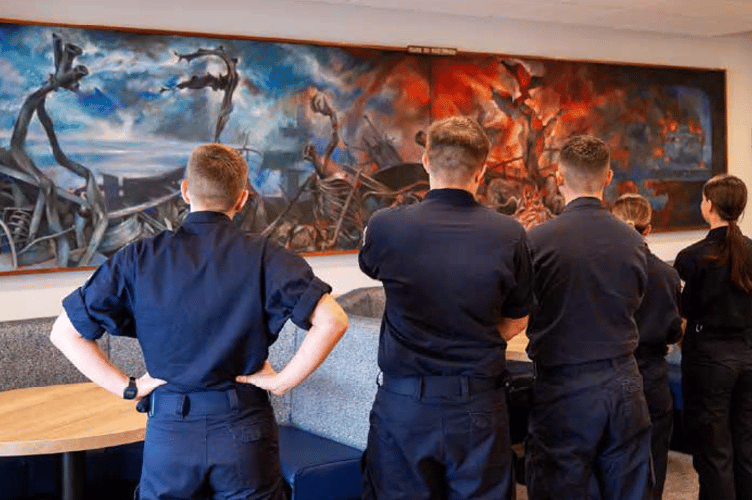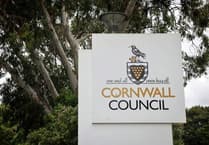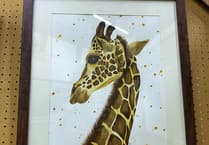A naval base in Cornwall is appealing for help as it investigates the history of a painting which looks like the darkest scene from a graphic fantasy novel but actually depicts one of the bleakest moments in recent naval history,
These are the death throes of RFA Sir Galahad, the amphibious support ship turned into a blazing hulk — alongside her sister ship Sir Tristram — in the Falklands in 1982 after an Argentine air attack.
Now the huge painting — 20 feet long, six tall — adorns the trainees’ mess at HMS Raleigh in Cornwall after more than 14 years out of sight.

It was ‘rediscovered’ during work on a disused classroom (not used since the late 2000s) in Fieldhouse Block.
The team from the Defence Infrastructure Organisation, which is responsible for the defence estate, are keen to know the story behind the artwork — no plaque or information panel was found with it at the Torpoint base.
The tragedy it graphically depicts is known by many: 56 men were killed, 48 of them from Sir Galahad — the greatest single loss of British lives in the conflict — when the landing ships were surprised by Argentine bombers at Bluff Cove on June 8, 1982.
But as to who painted it and why — was it someone who was there or a talented artist who served at HMS Raleigh sometime between 1982 and 2010 — everyone is in the dark.
“I walked into what was a classroom and, on the wall, I noticed a very unusual piece of artwork,” said Jon Rickman-Dawson, Raleigh’s facilities manager, who rediscovered the painting during an inspection of Fieldhouse Block while demolition work was carried out nearby.
“I took photos of it and started to ask questions to people who have worked on the site for a long time as to what they knew about it and what it is of.
“My hope is that someone will see the picture and it will make them remember something. It would be great to credit someone with having put something into this site that has been adopted as part of it.
“Other sites have so much history, they might have great gold-framed oil canvases. We haven’t got that, but what we have got is this.”
It’s now seen by several thousand men and women undergoing the transition from civilian to sailor every year, but it’s particularly stirred the memories of Falklands veterans such as Mark Eve.
He served as a chief petty officer in HMS Hecla, used as an ambulance ship helping those injured in the Bluff Cove attacks.
“I’ll be honest, the first time I saw the painting, it got me very emotional,” he said. “There are things in the painting that I can see, but nobody else can, but then when other veterans have looked at it, they see what I see. That’s the marvellous effect it has on you. It’s a little bit abstract in some respects but it encapsulates everything about the Falklands conflict.
“Not only does this painting make me emotional, but it also makes me immensely proud of what I did during that time. It was my duty, but I am still proud of what we all achieved.”
Raleigh’s commander Sean Brady said the base was keen to trace the artist and put the story behind the painting into context.
“What we want is to find who the artist is, where they are now and what they were trying to show with this painting,” he said. “I personally thought the artist was trying to show the reality of what happens in conflict and this picture shows it really well.”
If anyone can help, email [email protected]




